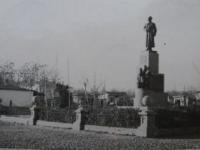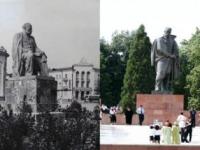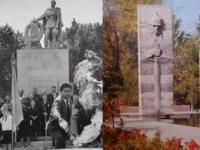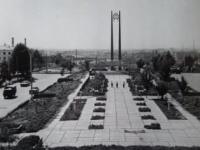You are here
Monuments of history in Dushanbe.




Monuments of history of Dushanbe.
"The greatest misunderstanding is to go into morality when it comes to historical facts"
Diderot Denis.
Nostalgic sightseeing tours in Dushanbe.
Monuments of Dushanbe - monuments of monumental art in the city of Dushanbe, dedicated to the perpetuation of famous personalities of Tajik culture and science, historical figures associated with Tajikistan. The traditions of the Islamic society in the countries of Central Asia, established in the Middle Ages, did not allow the development of fine and monumental art: the Islamic religion strictly forbade any images.
The history of the establishment of sculptures and monuments in the Tajik SSR dates back to the establishment of Soviet power and the formation of the Tajik Autonomous Soviet Socialist Republic in 1924.
Naturally, the first sculptors were representatives of Russian art. In 1927, the first bronze sculpture (a copy of the monument to V.I. Lenin near the Smolny Institute in Leningrad) was delivered to Dushanbe from Termez.
The monument was installed in the central park of culture and recreation named after V. I. Lenin in Dushanbe. In subsequent years, other monuments and busts of famous personalities of Tajik culture and science, historical figures and some leaders and military men of the Soviet era, such as Felix Dzerzhinsky, Joseph Stalin, Cheslav Putovsky and others, began to be erected on the main squares of the capital. After the independence of the Republic of Tajikistan, many monuments to the leaders of the Soviet era were dismantled.
Much attention was paid to the heroes of history and cultural figures of the Tajik people such as Ismail Samani, Firdousi, Rudaki and others.
1947.
onument to Valerian Vladimirovich Kuibyshev, Chairman of the State Planning Committee of the USSR. It was thanks to his will and efforts that the Termez-Dushanbe railway was built. When some of our neighbors stated at the board of the State Planning Committee of the USSR that it was not advisable to build a railway in the capital of Soviet Tajikistan, he, despite this, managed to get its construction started and even personally supervised the progress of its laying.
The last document signed by Kuibyshev a few minutes before his death was about rendering multimillion-dollar financial and material assistance to fraternal Soviet Tajikistan.
1952.
In Stalinabad, at the city hippodrome, a monument to Lieutenant General Timofei Timofeevich Shapkin was erected. As the commander of the 20th Tajik cavalry division, Shapkin sent to military schools and trained more than a hundred regular Tajik officers.
Thanks to his initiative and support, the republican hippodrome was opened. In Tajikistan, he was loved and respected: in Dushanbe, the townspeople built a house for him, one of the streets of the city was named after him by the decision of the City Council.
In the 1950s, a monument was erected in Stalinabad to the Tajik Soviet writer, public figure and scientist, laureate of the Stalin Prize in 1950, Sadriddin Aini. (left). Later, in the 70s, this monument was dismantled, and a new one was installed on the square (on the right).
In the 60s of the last century in the city park. Lenin, a monument to the fighters for the establishment of Soviet power in Tajikistan was opened. (left). But historians immediately saw the following nonsense: the Red Army soldier was dressed in the uniform of a soldier of the Great Patriotic War, and even with a Sudayev machine gun in his hands.
"We wanted the best, but it turned out, as always." Therefore, in 1971, the monument was dismantled and another, more appropriate for that time, was installed (on the right).
1971.
ew people know that here, on Victory Square, in the late 40s there was a scrap metal dump. A railway branch led to it, on the current square, and many of the old-timers remember how dozens of burned-out German tanks were unloaded on this square.
Now there is a monument with the later installed legendary tank "Joseph Stalin-2". It was dedicated to the memory of the creation of the tank column "Komsomolets of Tajikistan" during the Great Patriotic War. The golden stars on its two peaks symbolized the brotherhood and unbreakable friendship of the 15 union republics.
But in a strange way, in 1985, immediately after M.S. Gorbachev's stars disappeared, and a few years later, the Soviet Union disappeared.
Authority and photos by:
Gafur Shermatov, historian, especially for Asia-Plus. The material uses photographs from the Central State Archive of the Republic of Tatarstan and personal photographs of the author.
http://news.tj/ru/newspaper/article/pamyatniki-kotorye-my-vybiraem-chast-ii







